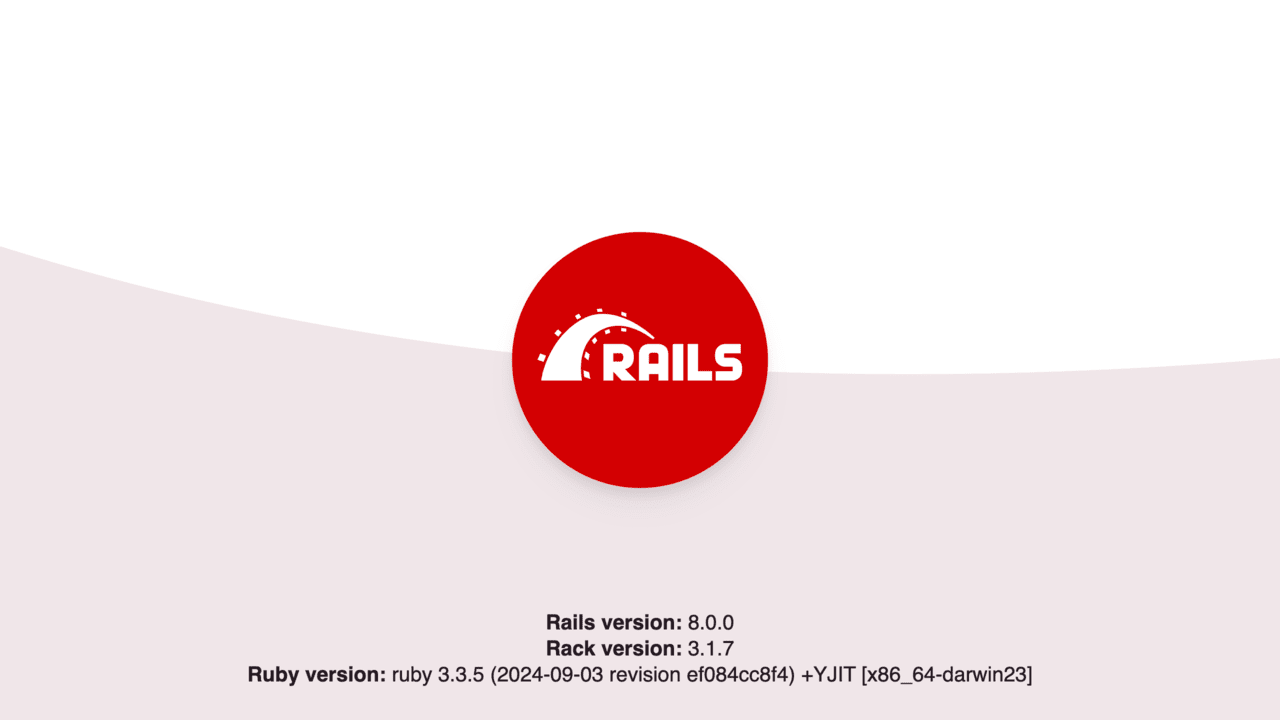For the purpose of this tutorial, we will assume you have Ruby and the Rails gem installed. Please visit the Getting Started with Rails Guide if you do not.
rails new rails_tailwind --skip-coffee --webpack -d postgresql
cd rails_tailwind
rails db:createThis will create a new Rails project for you with webpack and postgres configured for you and create our databases. We will not use coffeescript, which is why we add the --skip-coffee flag. You can also ommit the -d postgresql flag if you like, but if you want to deploy to something like Heroku, I would recommend adding it.
You need to run the Rails server and webpack-dev-server in two terminal tabs/windows unless you use Docker or a gem like Foreman.
For now, we will just create two terminal windows. In one window, run:
rails sand in the other:
./bin/webpack-dev-serverYou should see rails welcome page if you navigate to localhost:3000 in your browser.
In order to see the TailwindCSS styles that we will integrate later, we at minimum need a controller and view.
rails generate controller Home indexYou can remove the generated JS, SCSS, and helper file, we won't be needing them.
rm app/helpers/home_helper.rb app/assets/javascripts/home.js app/assets/stylesheets/home.scssChange your config/routes.rb file to:
# frozen_string_literal: true
Rails.application.routes.draw do
root 'home#index'
resources :home, only: :index
endRestart your Rails server, and now you should see the following on localhost:3000
Note: At the time of writing this, TailwindCSS v1.0 is still in beta so we will be installing tailwind@next. If v1.0 is out when are doing this and I have not updated this tutorial, you can omit @next.
Run the following commands in your terminal:
yarn add tailwindcss@next --dev
./node_modules/.bin/tailwind initThis should add Tailwind to your package.json as well as create a tailwind.config.js file at the root of your project. This file can be used to customize the tailwind defaults. Read more here
Next, add the following two lines to postcss.config.js
require('tailwindcss'),
require('autoprefixer'),Your postcss.config.js file should now look like this:
module.exports = {
plugins: [
require('tailwindcss'),
require('autoprefixer'),
require('postcss-import'),
require('postcss-flexbugs-fixes'),
require('postcss-preset-env')({
autoprefixer: {
flexbox: 'no-2009'
},
stage: 3
})
]
}There are a few ways you can do this but this is my personal preference.
Remove the assets folder:
rm -rf app/assetsRename the app/javascript directory:
mv app/javascript app/frontendTell webpacker to use this new folder by changing the source_path in config/webpacker.yml from: source_path: app/javascript to source_path: app/frontend.
Next, we need to setup our stylesheets:
touch app/frontend/packs/stylesheets.cssPaste the following into our new stylesheets.css file. This is straight from the tailwind docs
@tailwind base;
@tailwind components;
@tailwind utilities;Add the following line in app/frontend/packs/application.js:
import './stylesheets.css'The last step is to tell Rails to use our packs. In app/views/layouts/application.html.erb, change:
<%= stylesheet_link_tag 'application', media: 'all', 'data-turbolinks-track': 'reload' %>
<%= javascript_include_tag 'application', 'data-turbolinks-track': 'reload' %>to:
<%= stylesheet_pack_tag 'stylesheets', 'data-turbolinks-track': 'reload' %>
<%= javascript_pack_tag 'application', 'data-turbolinks-track': 'reload' %>Restart the Rails server and webpack-dev-server and you should now see the following on localhost:3000
Tailwind should now be working so lets tweak our views to see some Tailwind goodness.
In app/views/layouts/application.html.erb change:
<body>
<%= yield %>
</body>to:
<body class="min-h-screen bg-gray-100">
<div class="container mx-auto">
<%= yield %>
</div>
</body>and in app/views/home/index.html.erb change:
<h1>Home#index</h1>
<p>Find me in app/views/home/index.html.erb</p>to:
<section class="py-8 text-center">
<h1 class="text-5xl mb-2">Ruby on Rails + TailwindCSS</h1>
<p class="text-xl mb-8">❤️ A match made in heaven️️ ❤️</p>
<a href="https://next.tailwindcss.com" class="bg-teal-500 hover:bg-teal-700 text-white font-bold py-4 px-8 rounded">Tailwind Docs</a>
</section>You should now see the following page when you navigate to localhost:3000
And now you have TailwindCSS working in your Rails app!
Happy coding!



